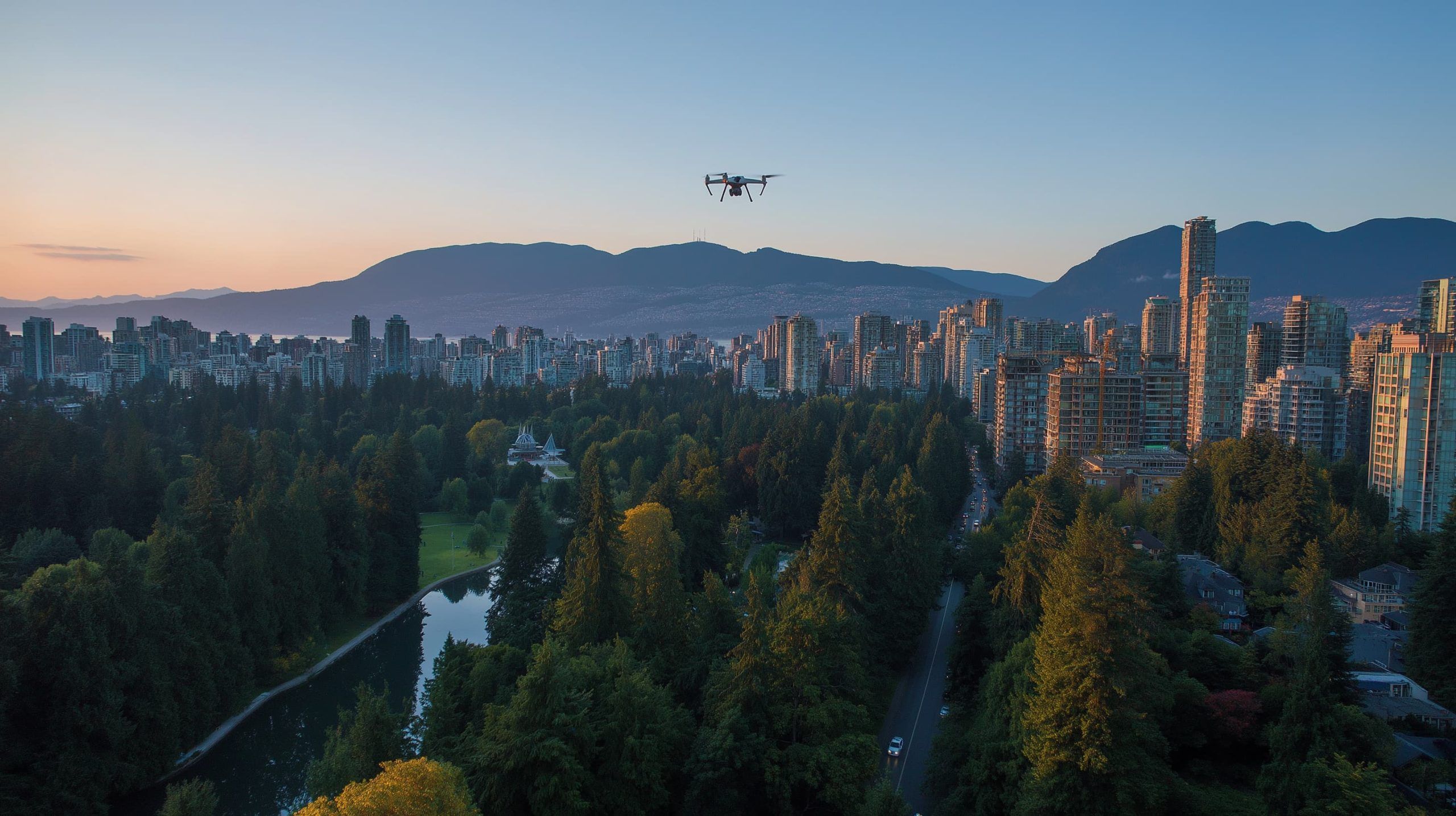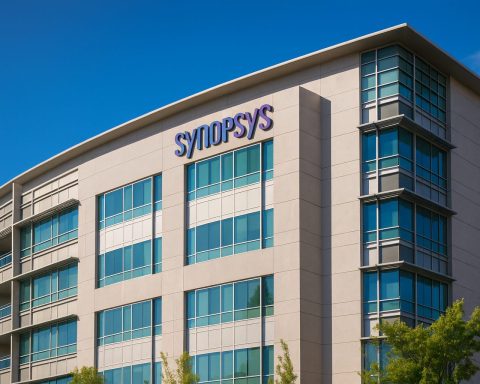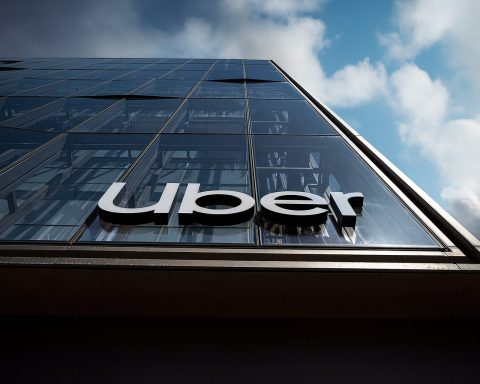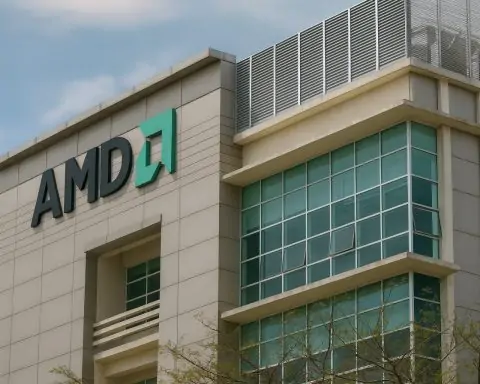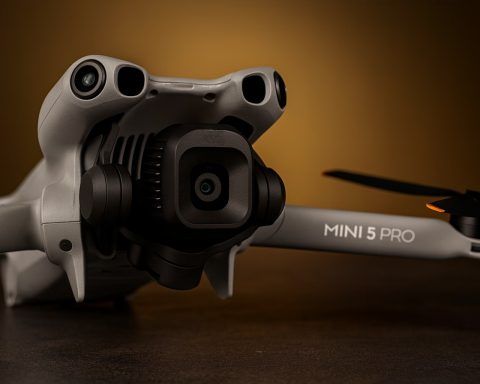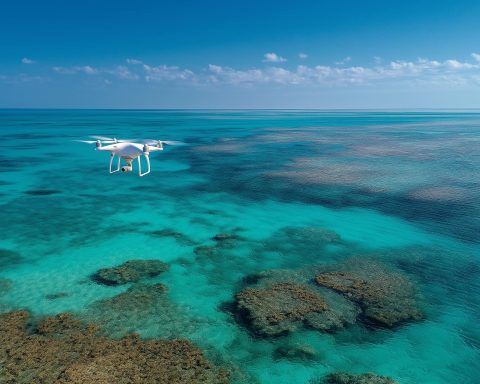- Drones weighing 250 g to 25 kg must be registered and operated by a licensed pilot under Transport Canada rules, while micro drones under 250 g are exempt from registration and licensing.
- The City of Vancouver Park Board bylaws prohibit taking off or landing a drone in city parks, beaches, and green spaces without permission, and no public parks are currently designated for drone use (examples include Stanley Park, Kitsilano Beach, and Queen Elizabeth Park).
- In 2025, the Metro Vancouver Regional District updated bylaws to forbid drone take-off or landing in regional parks without a park permit, covering sites like Pacific Spirit Regional Park, Lynn Headwaters, and Capilano River Regional Park.
- Most of Vancouver sits in Class C controlled airspace around Vancouver International Airport (YVR); pilots with Basic certificates cannot fly in controlled airspace, while Advanced Operations pilots may seek NAV CANADA permission to do so.
- BC provincial parks ban recreational drone take-offs and landings without written authorization from BC Parks, with Cypress Provincial Park, Mount Seymour, and Golden Ears named as examples where permission is rarely granted.
- Parks Canada prohibits drones in national parks unless you hold a special permit; Gulf Islands National Park is an example of a federally protected site where drones are generally not allowed.
- A Basic Operations certificate is required for drones 250 g and heavier (min. age 14), and it allows flight only in uncontrolled airspace with at least 30 m from bystanders and a 122 m (400 ft) altitude limit.
- An Advanced Operations certificate (min. age 16) requires an advanced theory exam and an in-person flight review, and permits access to controlled airspace with NAV CANADA permission and operations near or over people under safety requirements.
- A Special Flight Operations Certificate (SFOC) is required for operations outside basic/advanced rules, such as night flights beyond visual line of sight or drones over 25 kg.
- No-fly zones near airports and events require staying at least 5.6 km from YVR and 1.9 km from heliports, avoiding crowds and emergency sites, and using the Transport Canada Drone Site Selection Tool or NAV Drone app to check zones.
Introduction to Drone Use in Vancouver
Drones are increasingly popular in Vancouver for both recreational and commercial purposes. Enthusiasts use them to capture stunning aerial photos of the skyline and natural beauty, while businesses employ drones in real estate, filmmaking, and inspections. However, Vancouver’s dense urban environment – situated near a major international airport – means drone use is tightly regulated. Pilots must navigate a combination of federal laws and local restrictions to fly safely and legally. This report provides an up-to-date overview of Vancouver’s drone laws, covering everything from Transport Canada’s federal regulations to city-specific no-fly zones, recent 2024–2025 rule changes, penalties, and tips for responsible flying.
Overview of Federal Drone Regulations (Transport Canada)
All of Canada’s drone rules are set at the federal level by Transport Canada, primarily in Part IX of the Canadian Aviation Regulations (CARs) [1]. These rules apply in Vancouver and across the country. Key points include: any drone weighing between 250 g and 25 kg must be registered and the operator must hold a drone pilot certificate (license) [2]. Drones under 250 g (micro drones) are exempt from registration and licensing, but still must be flown safely and in accordance with other rules [3].
Transport Canada’s rules emphasize safety and airspace awareness. Drone pilots must always carry their pilot certificate while flying and ensure their drone’s registration number is clearly marked on the aircraft [4]. Operators are required to maintain visual line-of-sight with the drone at all times (i.e. you must always see your drone without aids like binoculars), and there is a strict altitude limit of 122 metres (400 feet) above ground level [5]. Drones cannot be flown in a manner that could conflict with other aircraft, so flying near airports or aircraft is heavily restricted (more on no-fly zones below). Additionally, pilots must keep a safe distance from people and property on the ground. For basic operations, drones must stay at least 30 metres away from bystanders (people not involved in the flight) [6]. It is also illegal to fly over or crowd large groups of people, or to fly in a reckless manner that endangers anyone [7] [8].
Federal law also prohibits drone flights in certain sensitive areas or situations. For example, drones must not fly near emergency response operations like active fires or accident scenes, as they can interfere with first responders [9]. Flying a drone over advertised events (such as outdoor concerts, festivals, or sporting events) is banned unless you have special authorization from Transport Canada [10]. And regardless of the situation, drone pilots are expected to respect the Criminal Code and privacy laws – using a drone to harass people, commit voyeurism, or other criminal activities can lead to serious charges [11]. In short, Transport Canada’s regulations provide the baseline: get certified, stay within line-of-sight and altitude limits, avoid people and sensitive areas, and always fly safely.
Local Drone Restrictions in Vancouver
In addition to federal rules, drone users in Vancouver must be mindful of local restrictions imposed by city authorities and other regional bodies. The City of Vancouver’s Park Board bylaws effectively prohibit drone flying in city parks, beaches, and green spaces without permission. Specifically, it is against the rules to “fly any motor-driven model airplane” in Vancouver parks except in designated areas [12]. In practice, there are no public parks in Vancouver currently designated for drone use, so recreational drone take-offs and landings in city parks are not allowed. This ban covers popular spots like Stanley Park, Kitsilano Beach, Queen Elizabeth Park, and other city-managed recreation areas. If you wish to film or fly in a Vancouver park, you must obtain a special permit from the Park Board.
Regional parks in the Greater Vancouver area have similar rules. The Metro Vancouver Regional District (which manages large regional parks around the Lower Mainland) also updated its bylaws in 2025 to forbid drone operations in those parks without a permit. The bylaw explicitly states that “except with a park permit… [no person shall use land in a regional park for] the take-off or landing of a drone or remotely piloted aircraft” [13]. This means parks such as Pacific Spirit Regional Park, Lynn Headwaters, Capilano River, and others are off-limits to casual drone flying unless you have obtained authorization for a specific purpose.
It’s important to note that Vancouver’s urban area lies within controlled airspace for Vancouver International Airport (YVR) and other local aerodromes. In fact, almost all of Vancouver proper is Class C controlled airspace, roughly from the Second Narrows Bridge in the east to the city limits in the south and west. If you only have a basic drone pilot certificate, you are not allowed to fly in controlled airspace – and “Vancouver is in controlled airspace” by default [14]. This effectively bars standard hobbyist drones (over 250 g) from being flown anywhere in the city without additional certification (more on that below). Even for drones under 250 g, which are permitted in controlled airspace, operators must still avoid restricted zones (e.g. near airports) and abide by local site rules (so launching a sub-250 g drone from a city park is still illegal due to park bylaws, for instance) [15] [16].
Lastly, drone pilots should be aware of British Columbia provincial park regulations. BC Parks does not allow recreational drone use in provincial parks without explicit permission. In BC, “drone operators must obtain permission from BC Parks to take off and/or land in any provincial park or protected area”, and in practice such permission is rarely granted [17]. This means areas like Cypress Provincial Park, Mount Seymour, or Golden Ears Park are essentially no-drone zones for hobbyists. Parks Canada has a similar policy for national parks, all of which are “no drone zones” unless you have a special permit or are assisting park management [18]. Although there are no national parks in Vancouver’s immediate vicinity, this is relevant for drone users planning trips to places like Gulf Islands National Park or other federally protected sites in BC.
Rules for Recreational Drone Users
Recreational drone pilots – those flying for fun, as a hobby, and not for paid work – must follow the same Transport Canada regulations as any other drone operator. There is no longer a separation between “hobby” and “commercial” rules in Canada; it is primarily the weight and flying conditions that determine which rules apply, not the purpose of the flight [19]. Thus, if your drone weighs 250 grams or more, even if you are just flying as a hobbyist, you must obtain at least a Basic Pilot Certificate and register the drone. You also need to be at least 14 years old to hold a Basic pilot certificate [20]. If you’re younger or not certified, you must be directly supervised by someone with a license while flying [21].
For recreational pilots with a Basic Operations certificate, the permissible flying areas are limited. Basic certification allows you to fly only in uncontrolled airspace – away from major airports and air traffic – and with certain distance restrictions from people. In practical terms, a basic-certified hobbyist cannot fly a drone in most of Vancouver, because the city is under YVR’s controlled airspace umbrella [22]. To legally fly with a Basic certificate, you would need to go to areas well outside the city’s control zones (for example, some parts of the Fraser Valley or other remote areas). Additionally, basic operations require you to keep at least 30 metres away from any bystanders at all times and never fly higher than 122 m AGL (above ground level) [23]. You also must stay clear of airspace around airports and heliports, as well as avoid flying over open-air assemblies of people. Essentially, recreational flyers with only a Basic license are restricted to quiet, open areas outside of cities like Vancouver, where there is no risk of straying into restricted airspace or over crowds.
Many casual drone users opt to fly the small “micro” drones under 250 g (such as the DJI Mini series) to simplify compliance. If you have a drone under 250 g, you do not need to get a pilot license or register it, which makes it attractive for recreational use. Transport Canada still expects you to fly these tiny drones safely, though. Even as a recreational micro-drone pilot, you should follow the core safety rules: keep the drone within sight, below 400 feet, away from bystanders and aircraft, and out of sensitive areas like busy parks, event venues, or emergency sites [24]. The Vancouver Police Department specifically notes that sub-250 g drones can be flown in controlled airspace (unlike heavier drones) but “you cannot fly in most municipal, provincial, and national parks” or near hazards like wildfires or airports [25] [26]. In summary, flying for fun in Vancouver is possible but constrained – most hobbyists either use very small drones with caution or travel outside the city to safer locations. Always remember that “recreational” does not mean exempt from the law; you are responsible for knowing and following the rules whenever you take to the skies.
Rules for Commercial Drone Operations
Commercial drone operations in Vancouver – meaning any flight conducted for business purposes, hire, or that yields financial benefit (for example, aerial photography services, filming for a movie, real estate marketing, inspections, etc.) – are subject to the same basic Transport Canada regulations, but typically involve additional requirements due to the nature of the work. Legally, Canada does not require a separate “commercial drone license”; commercial operators must obtain the same Basic or Advanced Pilot Certificates based on the operation, and register their drones, just like recreational pilots [27]. In practice, however, most commercial drone work in an urban area like Vancouver will require an Advanced Operations Certificate. The advanced certificate is needed to fly in controlled airspace (which covers the city) and to operate closer to people or in complex environments. To get the Advanced certificate, a pilot must be at least 16 years old, pass a more rigorous exam, and successfully complete an in-person flight review to demonstrate their skills and knowledge to a Transport Canada–approved evaluator. Advanced-certified pilots are allowed to request access to controlled airspace and even to fly in certain scenarios that basic pilots cannot, provided they have the proper approvals and safety equipment.
For example, a drone pilot with an Advanced Operations certificate can apply to NAV CANADA for permission to fly in Vancouver’s controlled airspace [28]. This is done through the NAV Drone system or via NOTAM requests, and you must abide by any altitude or area restrictions given. Advanced operations also permit flying within 30 metres of people, or even over people in limited circumstances, if the drone meets Transport Canada’s safety design standards for those operations. Many professional drones and use-cases (e.g. film crews capturing scenes in downtown Vancouver, or surveyors inspecting infrastructure) fall under advanced operation criteria. Operators should ensure their equipment (drone model) is certified for advanced use and carry documentation like the manufacturer’s safety declaration. If a particular job falls outside the scope of the basic/advanced rules – say, flying at night beyond visual line of sight, or using a drone over 25 kg – the company or pilot must apply for a Special Flight Operations Certificate (SFOC) from Transport Canada to get permission for that specific operation.
In addition to aviation rules, commercial drone users have to consider local permits and insurance. Vancouver has a large film and media industry, and the city requires film productions to obtain permits when using drones for filming on city property. For instance, to fly a drone commercially in a public space or park, you would need a film permit from the City or Park Board. These permits often require proof of substantial liability insurance. Vancouver typically asks for at least $5 million in liability insurance coverage naming the City and Park Board as insured parties before allowing drone filming in parks [29]. Commercial operators should plan ahead to secure any necessary municipal permits (for parks, road closures, etc.) and coordinate with authorities if flying in sensitive locations.
Lastly, all commercial drone flights must also respect privacy and safety beyond just the letter of the aviation law. Clients and drone service companies should ensure they are not capturing footage of private property or individuals in a way that violates privacy laws, and should be mindful of local community concerns (noise, disturbances). It’s good practice for commercial operators to notify nearby residents or businesses when a drone operation is taking place, especially in a busy city like Vancouver. By following federal rules, obtaining proper certification, and complying with local permit requirements, commercial drone pilots can safely leverage drones for business while avoiding legal trouble.
Licensing and Certification Requirements (RPAS Pilot Certification)
Drone pilot certification in Canada is mandatory for anyone flying a drone weighing 250 g to 25 kg, whether in Vancouver or elsewhere, unless they are under direct supervision of a licensed operator [30]. Transport Canada offers two levels of certification:
- Pilot Certificate – Basic Operations, and
- Pilot Certificate – Advanced Operations.
To obtain a Basic Operations certificate, you must be at least 14 years old and pass an online exam administered by Transport Canada [31]. The exam tests knowledge on air law, navigation, meteorology, and drone operations. Once you pass, you’ll be issued a Basic pilot certificate. This certificate allows you to fly in uncontrolled airspace and far from bystanders (as detailed earlier), but does not entitle you to fly in controlled airspace (like most of Vancouver) or closer than 30 m to people.
An Advanced Operations certificate has stricter requirements. You must be at least 16 years old and first pass a more comprehensive advanced theory exam [32]. After passing the exam, you need to complete a flight review with a certified reviewer. The flight review is an in-person practical test where you demonstrate your ability to operate the drone safely, perform controlled maneuvers, handle emergencies, understand airspace, and follow procedures. Upon successfully completing the flight review, you obtain the Advanced certificate. Advanced pilots are allowed to fly in controlled airspace (with air traffic control permission) and conduct operations near or over people if conditions are met. They also are the only ones eligible to fly higher-risk missions like within the vicinity of airports (with clearance) or at night (with proper lighting), etc., without needing an SFOC. In all cases, pilots must carry their certificate (either a printed or digital copy) while flying and present it to enforcement officers if asked [33].
Both Basic and Advanced certificates are part of the Remotely Piloted Aircraft System (RPAS) pilot certification program introduced by Transport Canada in 2019. These certifications do not expire, but pilots are expected to stay up to date with regulations and may be required to recertify or take refresher training if rules change (for example, new categories of operations coming in 2025). Note that foreign drone pilots (e.g. someone visiting Vancouver from another country) are not exempt from Canada’s certification requirements. A visitor who wishes to fly their drone in Canada must either obtain a Canadian pilot certificate or apply for a special flight permission; simply having an FAA license or other foreign certificate is not sufficient. The Vancouver Police clarify that “visitors from other countries must conform to Transport Canada’s regulations” just like residents [34].
In addition to pilot licensing, there is a requirement to register your drone (if it weighs 250 g to 25 kg). Registration is done online through Transport Canada’s website for a small fee, and you will receive a registration number which you must affix to the drone. The drone’s registration must be valid and tied to a certified pilot. Also, if you modify your drone or it no longer meets the safety standards, you might void its eligibility to fly under your certificate. Always follow the manufacturer’s maintenance guidance and only fly drones that are in safe working condition and meet Transport Canada’s technical requirements.
To summarize, getting certified is one of the first steps to flying legally. If you’re new to drones, study for the Basic exam, get some flying experience in uncontrolled airspace, and if you plan to fly in a city like Vancouver or do commercial work, work towards obtaining the Advanced certificate. Certification not only ensures you understand the rules and safety practices, but it is also your legal responsibility as a drone pilot in Canada.
No-Fly Zones and Restricted Airspace in Vancouver
Vancouver has several no-fly zones and restricted airspaces where drones cannot be flown, or can only be flown under stringent conditions. These restrictions come from federal airspace rules as well as local regulations. Important no-fly zones and restrictions include:
- Airports and Aerodromes: It is illegal to fly a drone anywhere close to airports or heliports due to the risk of collision with manned aircraft. Transport Canada requires drones to stay at least 5.6 km (3 nautical miles) away from any certified airport, such as Vancouver International Airport (YVR), and at least 1.9 km (1 nautical mile) away from any certified heliport [35]. In Vancouver, aside from YVR, there are other aerodromes to be aware of: Vancouver Harbour Water Airport (the seaplane terminal downtown) and heliports at hospitals or the downtown waterfront. These are all no-fly areas for drones without special permission. Practically speaking, the controlled airspace around YVR extends over Vancouver and its suburbs – any drone operation in that zone requires an Advanced certificate and explicit clearance from NAV CANADA [36]. Flying a drone near an airport without permission is one of the most serious violations and can result in heavy fines or even criminal charges.
- Parks and Natural Areas: National parks are off-limits to recreational drones – “Drone pilots are not allowed to take-off or land within a national park” without a special permit from Parks Canada [37]. BC provincial parks likewise ban drone take-offs and landings without written authorization [38], which is seldom granted. Within Vancouver, city parks, beaches, and playgrounds are generally no-fly zones as well because local bylaws prohibit launching or landing drones there (unless specifically authorized) [39]. This means popular tourist spots like Stanley Park, English Bay, and Granville Island (a mixed-use area that is partly park space and close to a floatplane route) are essentially no-fly areas for drones. Even if you attempt to fly over a park from outside its boundaries, you may still be contravening park rules and could face fines or have your drone confiscated by park rangers or police. Always seek permission if you have a valid reason to operate in these areas (e.g. a commercial film shoot with city approval).
- Restricted Airspace and Critical Infrastructure: Certain areas are designated as restricted airspace (Class F) or have Notices to Airmen (NOTAMs) that prohibit drones. Examples could include military bases, port and harbor facilities, or critical infrastructure sites. While Vancouver proper doesn’t have large military bases, there are sensitive sites like Port of Vancouver terminals and bridges. Federal rules explicitly forbid flying drones over military bases or prisons, or near border crossings [40]. In the Vancouver area, this means you should not fly near places like the Fraser Valley institutions (if operating outside the city) or the international border south of the city. “Critical infrastructure” isn’t individually listed in the drone laws, but as a pilot you should avoid hovering over power stations, communication towers, or water treatment plants, for example, since doing so could be seen as a security threat and might violate other laws. Always check the NAV CANADA interactive drone map or app for advisories – many restricted zones (permanent or temporary) will be indicated there [41].
- Emergency Sites and Public Events: By law, drones must not be flown within the security perimeter of any active emergency. This means if there’s a large fire, police incident, or natural disaster scene, keep your drone well away. In 2023, there were instances in BC of drone hobbyists getting fined heavily (up to $10,000) for flying near wildfire fighting operations [42]. Such interference is taken very seriously. Similarly, advertised public events like outdoor concerts, fireworks displays, marathons, parades, or sports games are no-fly zones for drones unless you have a Special Flight Operations Certificate explicitly allowing it [43]. Vancouver hosts large events (celebrations, international sports, etc.) where drone use is prohibited to protect attendees and aircraft – for example, one cannot just fly a drone over the crowd at the Celebration of Light fireworks or a Canucks game at the outdoor fan zone. Always assume that if a large public gathering is happening, you cannot fly your drone there without special permission from Transport Canada and event organizers.
In summary, always research your flight area in advance. Vancouver’s airspace is complex, and the combination of permanent restrictions (airports, parks) and temporary ones (events, emergency scenes) means a responsible pilot must stay informed. Use tools like Transport Canada’s Drone Site Selection Tool (interactive map) and the NAV Drone app to identify no-fly zones before you take off [44]. When in doubt, err on the side of caution and choose a different location to fly. The airspace rules are designed to prevent accidents and conflicts – violating no-fly zone restrictions can lead to stiff penalties or even the loss of your drone if authorities seize it.
Recent Updates or Changes to Regulations (2024–2025)
Drone regulations are evolving, and there have been significant updates announced for the 2024–2025 period that affect Vancouver pilots and others in Canada. In 2023, Transport Canada published an expansion of the drone rules to enable new types of operations. These changes are set to come into effect by November 4, 2025, and are aimed at “unlocking the potential” of advanced drone operations like beyond visual line-of-sight (BVLOS) and heavier drones [45]. Here are some of the key changes that were introduced in this regulatory update:
- Beyond Visual Line-of-Sight (BVLOS) Operations: A new framework will allow certain lower-risk BVLOS flights without needing a Special Flight Operations Certificate [46] [47]. Transport Canada is creating a new pilot certification (a Level 1 “Complex” Operations certificate) specifically for BVLOS, which will require additional training and exams beyond the current Advanced certificate [48] [49]. BVLOS flights will initially be limited to uncontrolled airspace, below 400 ft, and away from populated areas unless certain conditions are met [50] [51]. This could eventually allow things like drone deliveries or long-range inspection flights in the Vancouver region, but pilots will need to be specially certified and likely have an RPAS Operator Certificate (RPOC) for their organization [52].
- Medium-Sized Drones (25–150 kg): The new regulations introduce rules for operating drones weighing over 25 kg (up to 150 kg) within visual line-of-sight [53]. Previously, any drone over 25 kg required an SFOC for any use. With the changes, qualified pilots will be able to fly these larger drones under defined conditions (likely with Advanced certificates and perhaps additional endorsements). This could be relevant for specialized operations around Vancouver, such as heavy-lift drones for film productions or cargo drones, once the rules fully come into force.
- Expanded Advanced Operations: Pilots with an Advanced Operations Certificate will gain new privileges in 2025. The updated rules will allow advanced pilots to perform “sheltered operations” and “extended visual line-of-sight (EVLOS) operations” without needing an SFOC [54] [55]. Sheltered operations means flying a drone near structures (like between buildings in a city) with some relaxation of distance rules, as long as you stay within 30 m of the structure and not above it by more than 30 m [56]. EVLOS allows using a visual observer to fly a bit farther than a single pilot’s line-of-sight (within about 2 nautical miles) under specific conditions [57] [58]. These changes acknowledge that advanced pilots can safely do more complex flights. For a city like Vancouver, this could enable, for example, inspection drones flying beyond a single line of sight around large infrastructure, provided a trained observer is helping.
- New Requirements for Micro Drones at Events: The upcoming rules include provisions about even micro drones (under 250 g) being restricted for certain high-risk scenarios, like flying over advertised events [59]. In other words, Transport Canada is closing the loophole where someone might think they can fly a tiny drone over a concert or sports event. Under the new rules, you will explicitly need special authorization to do that, regardless of drone weight.
- Fees and Remote ID: Transport Canada signaled there will be new and updated fees for drone services (such as exams, certificates, registrations) [60]. This likely means pilot exam fees or SFOC fees might increase to support the expanded program. As of 2025, Canada has not mandated “Remote ID” transmitters for drones (unlike the US where Remote ID is required), but new technical standards are being introduced. Some of these standards may eventually facilitate identifying drones in flight [61]. Pilots should stay tuned on whether Canada adopts a remote identification requirement in the future.
Timeline-wise, these changes are being rolled out in phases. Starting April 1, 2025, pilots were able to start taking the new exams (for BVLOS Level 1, etc.) and applying for the new operator certificates [62]. However, the operational rules remain the same until November 2025 – meaning you cannot actually fly BVLOS or with the new privileges until the final implementation date [63]. Until then, if you want to do things outside the current rules (e.g. fly beyond line-of-sight in 2024), you still need to go through the SFOC application process.
Apart from operational expansions, there have also been increases in penalties. Transport Canada announced higher fines for drone offenses, coming into effect in 2024–2025. For instance, the maximum fine for an individual flying without a license or flying in a prohibited area is being raised from $1,000 to $3,000 [64]. For corporations, fines that were once $5,000 per violation are jumping up to $15,000 in some cases [65]. These changes reflect a stricter stance on enforcement as drone usage grows. In Vancouver’s context, this means if someone breaks the rules (say, flies a drone in downtown airspace without permission), the financial consequences can be even more severe than before.
In summary, the 2024–2025 period is one of transition. Transport Canada is expanding what drones can do legally, especially for advanced operators, but also reinforcing the importance of compliance by raising fines. Drone pilots in Vancouver should educate themselves on these upcoming rules – even if you’re just a hobbyist, knowing about changes like micro drone restrictions at events or the possibility of new fees is important. By late 2025, the drone landscape will likely look a bit different, with more opportunities for certified pilots (e.g. delivery drones or long-range flights might start appearing) but also higher expectations for all operators to follow the law. Always check Transport Canada’s Drone Safety website for the latest updates and guidance as regulations continue to evolve.
Penalties for Violating Drone Laws
Failing to follow drone laws in Vancouver (and Canada generally) can result in severe penalties, ranging from hefty fines to criminal charges in extreme cases. Transport Canada and law enforcement agencies have the authority to enforce the rules, and they have not hesitated to punish unsafe or illegal drone flying.
Under the Canadian Aviation Regulations, fines for individuals can be up to $1,000 for each lesser offense such as flying without a valid drone pilot certificate or flying an unregistered/unmarked drone [66]. More serious infractions carry higher fines – for example, an individual can be fined up to $3,000 for flying in a prohibited/restricted area or in a way that endangers people and aircraft [67]. These amounts are per violation, so if someone was, say, flying without a license and in a no-fly zone and above 400 feet, multiple fines could stack up. For companies or corporations (e.g. a media company using drones), the stakes are even higher: fines up to $5,000 for not having certified pilots or registered drones, and up to $15,000 for serious violations like unauthorized flights in restricted airspace or creating a hazard [68]. Recent regulatory changes are solidifying these higher fines, meaning as of 2024–2025 the maximum penalties have increased (from $1,000 to $3,000 for individuals, and from $5,000 to $15,000 for corporations, in many cases) [69] [70].
Financial penalties aside, egregious drone misuse can lead to criminal consequences. The Aeronautics Act and Criminal Code of Canada can be applied if a drone is flown in a manner that is willfully dangerous or criminal. For instance, flying a drone in a way that endangers an aircraft (like near an airport runway) could potentially lead to prosecution and even jail time under federal law. There have been cases in Canada of drone operators facing charges for near-misses with airplanes or for obstruction of emergency responders. Moreover, as the Vancouver Police Department points out, using a drone for activities like harassment, stalking, voyeurism, or mischief is a criminal offense and can result in arrest [71]. A drone with a camera peeking into someone’s apartment window, for example, could land the operator in serious legal trouble beyond just a fine – it could be considered criminal voyeurism or trespassing.
Local authorities in Vancouver also have ticketing bylaws. If you violate city-specific rules (for example, launching a drone in a park or flying over a public event without permission), you may receive a ticket under city bylaws in addition to any federal fines. The Vancouver Park Board has the power to issue fines or evict people from parks for bylaw infractions. While those fines are usually much smaller (often in the $100–$500 range for a bylaw ticket), they can accompany the larger Transport Canada penalties if multiple jurisdictions are involved.
Enforcement is ramping up as drones become more common. Vancouver Police and Transport Canada inspectors do investigate reports of illegal drone flights. They may use tools to track a drone pilot’s location or involve airport authorities if a drone is spotted near runways. If you are caught, at minimum you could face fines, and authorities can also seize your drone in an investigation. Repeat offenders or those who cause safety incidents may even have their pilot certificates revoked or suspended.
In short, don’t risk it: the cost of violating drone laws far outweighs any momentary benefit of an illegal flight. A panoramic shot of the Vancouver skyline isn’t worth a $3,000 fine – or worse, causing an accident. Always fly within the rules, and if you’re unsure about the legality of a flight, err on the side of caution or seek official guidance. The penalties underscore one thing clearly: safety and compliance are paramount in drone operations.
Tips for Flying Drones Safely and Legally in Vancouver
Flying a drone in Vancouver can be enjoyable and rewarding if done responsibly. Here are some essential tips to help you stay safe and legal:
- Know the Rules & Get Certified: Educate yourself on the current drone regulations. If your drone is 250 g or heavier, get your drone pilot certificate (at least Basic, or Advanced for city flying) and register your drone with Transport Canada before flying [72]. Always carry proof of your certification when operating your drone.
- Plan Your Flight and Check Airspace: Vancouver’s airspace is complex, so always survey the area and check for any airspace restrictions or NOTAMs ahead of time. Use the National Research Council’s drone map tool or NAV CANADA’s NAV Drone app to see where you can fly [73]. These tools will show no-fly zones like the airport control zones and heliports. If you have Advanced certification, use the app to request clearance from air traffic control when flying in controlled airspace.
- Keep it in Sight and Below 400 Feet: Maintain visual line-of-sight with your drone at all times and never exceed 122 metres (400 feet) in altitude [74]. Flying high or beyond your line of sight not only breaks the rules but increases the risk of losing control or interfering with other aircraft. If you’re flying near Vancouver’s downtown high-rises, be mindful of your altitude relative to the buildings and stay well below the tops of structures unless authorized.
- Respect No-Fly Zones: Strictly avoid flying near airports (stay >5.6 km from YVR and >1.9 km from heliports) [75], over hospitals with helipads, or in any published restricted airspace. Do not take off or land in parks or beaches within Vancouver without a permit, and stay away from provincial and national parks unless you have special permission [76] [77]. Likewise, never fly over crowds, busy streets, public events, or emergency sites [78] [79]. It’s both illegal and dangerous to do so.
- Maintain Safe Distances: Even in allowable areas, practice safe distancing. Keep your drone at least 30 metres away from bystanders for basic operations [80]. Give wide berth to buildings, power lines, and vehicles. Avoid flying directly over people, homes, or roads. If you’re flying a camera drone, be conscious of people’s privacy – don’t hover over backyards or snap photos of individuals without consent.
- Fly in Good Conditions: Only fly when weather conditions are suitable. Strong winds, heavy rain, or fog can make drone flying unsafe. Vancouver’s weather can change quickly, so check the forecast. Legally you can fly at night only if your drone has lights that make it visible, but as a tip, beginners should stick to daytime. At night, it’s harder to maintain visual line-of-sight and gauge distances.
- Be Prepared and Responsible: Before flight, inspect your drone (battery level, propellers, GPS connectivity, etc.) and ensure it’s in working order. During flight, stay alert for helicopters, float planes, or other low-flying aircraft – be ready to descend or land if one approaches. Vancouver’s harbor and downtown see frequent air traffic (news helicopters, seaplanes), so vigilance is key.
- Respect Privacy and Property: Vancouver is a densely populated city; with many condos and homes, your drone might inadvertently peer into someone’s window or yard. Avoid flying too close to private property and never use your drone to record someone without permission. Not only is this courteous, it also keeps you clear of any allegations of harassment or voyeurism, which can have legal consequences [81]. If you’re photographing or videoing, consider informing people nearby or avoiding identifiable individuals in your shots.
- Follow Local Guidance: If you’re at a location and a park official, police officer, or security guard asks you about your drone flying, be polite, show your permit or license if applicable, and follow their instructions. Different sites might have unique restrictions (for example, around critical infrastructure or during special events). Being cooperative can go a long way; authorities will appreciate a pilot who is trying to do the right thing.
- Stay Updated: Finally, keep abreast of regulatory changes. As outlined, drone rules are being updated as of 2024–2025. New opportunities (and requirements) are on the horizon – for instance, if you plan to do advanced operations like BVLOS in the future, know the steps to qualify for the new certifications. Subscribe to Transport Canada’s drone safety notices or check their website periodically. Joining a local drone club or online community can also help you learn from others and stay informed about flying spots and rule changes in the Vancouver area.
By following these tips and using common sense, you can enjoy flying your drone around Vancouver safely. The city offers beautiful vistas and unique shooting opportunities – and with careful planning and respect for the laws, you can capture them without incident. Happy and safe flying!
Sources: Transport Canada – Drone Safety Rules [82] [83]; Vancouver Police Department – Drone Guidelines [84] [85]; City of Vancouver & Metro Vancouver Park Bylaws [86] [87]; Transport Canada – 2025 Regulatory Amendments [88] [89]; Union of BC Municipalities – Provincial Drone Policy [90].
References
1. tc.canada.ca, 2. tc.canada.ca, 3. tc.canada.ca, 4. tc.canada.ca, 5. tc.canada.ca, 6. tc.canada.ca, 7. vpd.ca, 8. tc.canada.ca, 9. tc.canada.ca, 10. tc.canada.ca, 11. vpd.ca, 12. vancouver.ca, 13. metrovancouver.org, 14. vpd.ca, 15. vpd.ca, 16. vpd.ca, 17. www.ubcm.ca, 18. tc.canada.ca, 19. tc.canada.ca, 20. tc.canada.ca, 21. tc.canada.ca, 22. vpd.ca, 23. vpd.ca, 24. vpd.ca, 25. vpd.ca, 26. vpd.ca, 27. tc.canada.ca, 28. vpd.ca, 29. vancouver.ca, 30. tc.canada.ca, 31. tc.canada.ca, 32. tc.canada.ca, 33. tc.canada.ca, 34. vpd.ca, 35. tc.canada.ca, 36. vpd.ca, 37. tc.canada.ca, 38. www.ubcm.ca, 39. vancouver.ca, 40. vpd.ca, 41. tc.canada.ca, 42. www.ctvnews.ca, 43. tc.canada.ca, 44. tc.canada.ca, 45. tc.canada.ca, 46. tc.canada.ca, 47. tc.canada.ca, 48. tc.canada.ca, 49. tc.canada.ca, 50. tc.canada.ca, 51. tc.canada.ca, 52. tc.canada.ca, 53. tc.canada.ca, 54. tc.canada.ca, 55. tc.canada.ca, 56. tc.canada.ca, 57. tc.canada.ca, 58. tc.canada.ca, 59. tc.canada.ca, 60. tc.canada.ca, 61. tc.canada.ca, 62. tc.canada.ca, 63. tc.canada.ca, 64. tc.canada.ca, 65. tc.canada.ca, 66. tc.canada.ca, 67. tc.canada.ca, 68. tc.canada.ca, 69. tc.canada.ca, 70. tc.canada.ca, 71. vpd.ca, 72. tc.canada.ca, 73. tc.canada.ca, 74. tc.canada.ca, 75. tc.canada.ca, 76. tc.canada.ca, 77. www.ubcm.ca, 78. tc.canada.ca, 79. tc.canada.ca, 80. tc.canada.ca, 81. vpd.ca, 82. tc.canada.ca, 83. tc.canada.ca, 84. vpd.ca, 85. vpd.ca, 86. vancouver.ca, 87. metrovancouver.org, 88. tc.canada.ca, 89. tc.canada.ca, 90. www.ubcm.ca
